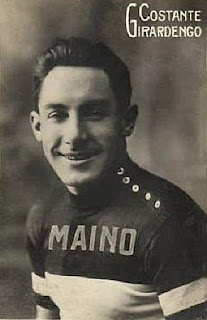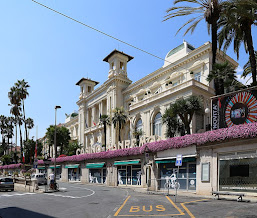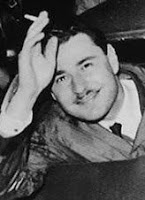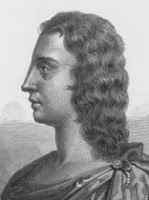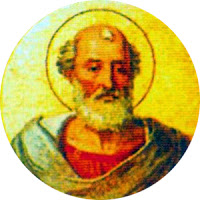Felice Pedroni - prospector
Italian’s discovery sparked Fairbanks Gold Rush
The gold prospector known as Felix Pedro was born Felice Pedroni on this day in 1858 in the village of Trignano, near the small Apennine town of Fanano in Emilia-Romagna. In July 1902, on or around the 22nd, Pedroni discovered gold in the Tanana Hills northeast of the fledgling town of Fairbanks, Alaska in a small, then unnamed stream (later to be called Pedro Creek). Some claim that Pedroni was the prospector who, on his return to Fairbanks from his prospecting mission, uttered the famous words "There's gold in them there hills", although there are other accounts of where the phrase originated. What does not seem to be disputed is that Pedroni’s discovery triggered what became known as the Fairbanks Gold Rush as more than 1,000 other gold diggers flooded the area. Brought up in a family of subsistence farmers in Trignano, Pedroni was the youngest of six brothers. He left Italy in 1881 after the death of his father. He moved first to France, then took the bold decision to board a steamship to America. After disembarking in New York City, where he was registered as Felix Pedro, he found work as a labourer but, having heard about the gold in Alaska was determined to get there. Read more…
_________________________________________________________
Fortunino Matania - artist and illustrator
War artist famous also for images of British history
Chevalier Fortunino Matania, a prodigiously talented artist who became known as one of the greatest magazine illustrators in publishing history, was born on this day in 1881 in Naples. Matania made his name largely in England, where in 1904 he joined the staff of The Sphere, the illustrated news magazine that was founded in London in 1900 in competition with The Graphic and the Illustrated London News. The use of photography on a commercial scale was in its infancy and artists who could work under deadline pressure to produce high-quality, realistic images to accompany news stories were in big demand. Never short of work, he was commissioned by magazines across Europe, including many in his native Italy. Matania’s best known work was from the battlegrounds of the First World War but he also covered every major event - marriages, christenings, funerals and state occasions - from the coronation of Edward VII in 1902 to that of Queen Elizabeth II in 1953. He produced illustrations of the Sinking of the Titanic for The Sphere. He was also in demand to design advertising posters, such as those inviting travellers on the LNER and other railways to visit Blackpool or Southport. Read more…
___________________________________________________________
Antonio Starabba Marchese di Rudini – Prime Minister
Bloodshed in Milan marred liberal premier’s time in office
Political leader Antonio Starabba, Marchese di Rudini, who twice served as prime minister of Italy, was born on this day in 1839 in Palermo in Sicily. During his second term in office, Di Rudini’s Government passed social legislation to create an obligatory workmen’s compensation scheme and a fund for disability and old age pensions but they were also blamed for the army’s brutal treatment of rioters in Milan. Di Rudini was born into an aristocratic but liberal Sicilian family and grew up to join the revolutionaries in Sicily. He became Mayor of Palermo and successfully resisted the opponents of national unity. He was then promoted to Prefect and given the task of suppressing the brigands in Sicily. After entering parliament, Di Rudini became leader of the right wing but when he became premier in 1891 he formed a coalition with the left and began economic reforms. When Di Rudini became prime minister for the second time in 1896, the Italian army had just been defeated in Ethiopia and he signed the peace treaty to end the war there. In 1898, riots in Milan about food prices were brutally repressed by General Fiorenzo Bava-Beccaris. Read more…
___________________________________________________________
Adelaide del Vasto – Countess of Sicily
Prudent ruler who looked after Sicily for her young sons
Adelaide del Vasto, who served as regent of Sicily during the 12th century, died on this day in 1118 in Sicily. One historian described her as ‘a prudent woman’ and a Greek and Arab document listed Adelaide – known in Italian as Adelasia - as ‘a great female ruler and protector of the Christian faith’. Born in Piedmont, Adelaide was from an important family with branches that ruled Liguria and Turin. She became the third wife of Roger I of Sicily in 1089. When he died in 1101 she became regent of Sicily for her young sons, Simon and Roger II, when she was about 26. After rebellions broke out in parts of Calabria and Sicily, Adelaide dealt with them severely, but this did not tarnish her reputation as a good ruler. Adelaide’s eldest son, Simon, was enthroned at about the age of nine but he died in 1105 leaving her as regent again until Roger II became old enough to take control of the kingdom in 1112. There is evidence that Adelaide continued to play a central role in the governing of Sicily as her signature can still be seen on documents drawn up after that date. During her regency Palermo officially became capital of the Kingdom of Sicily. Read more…











.jpg)



